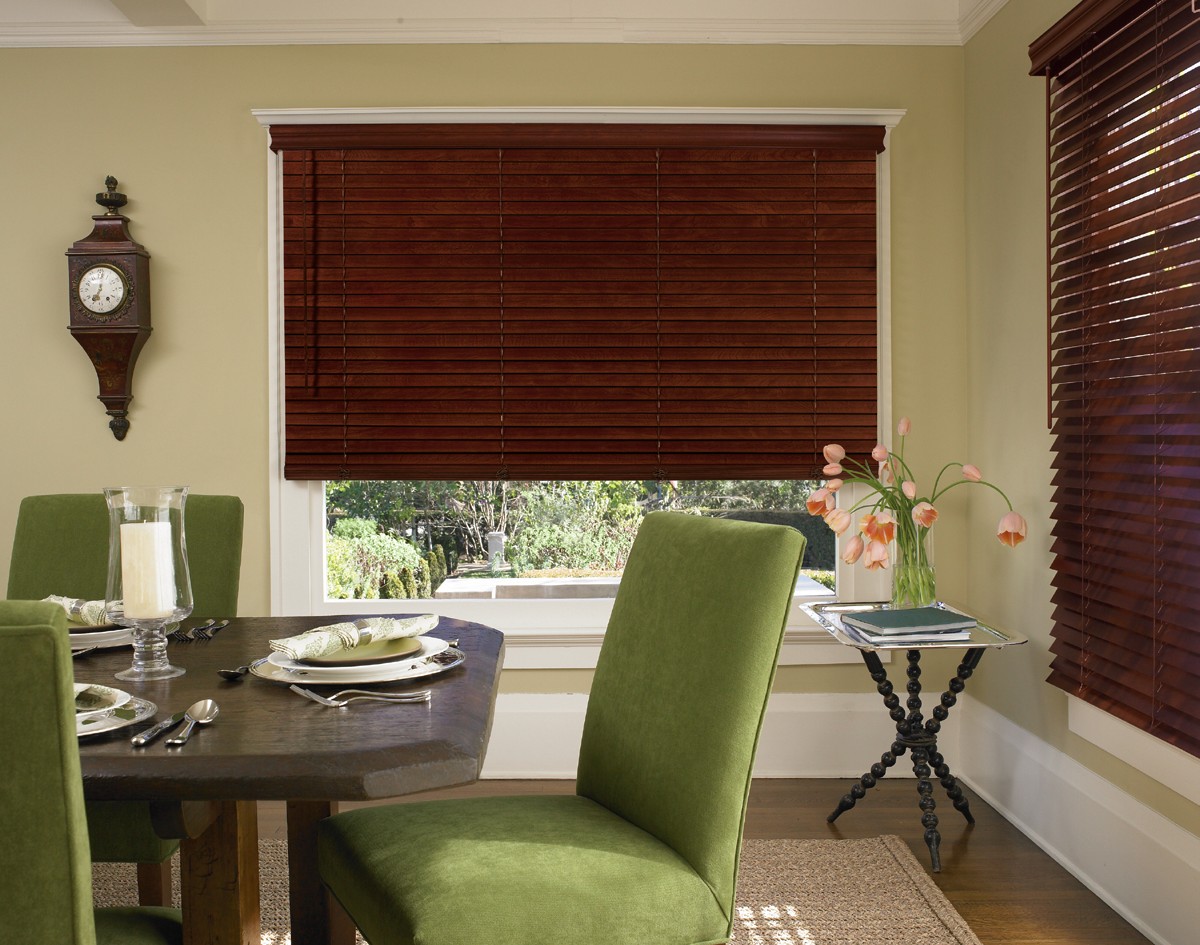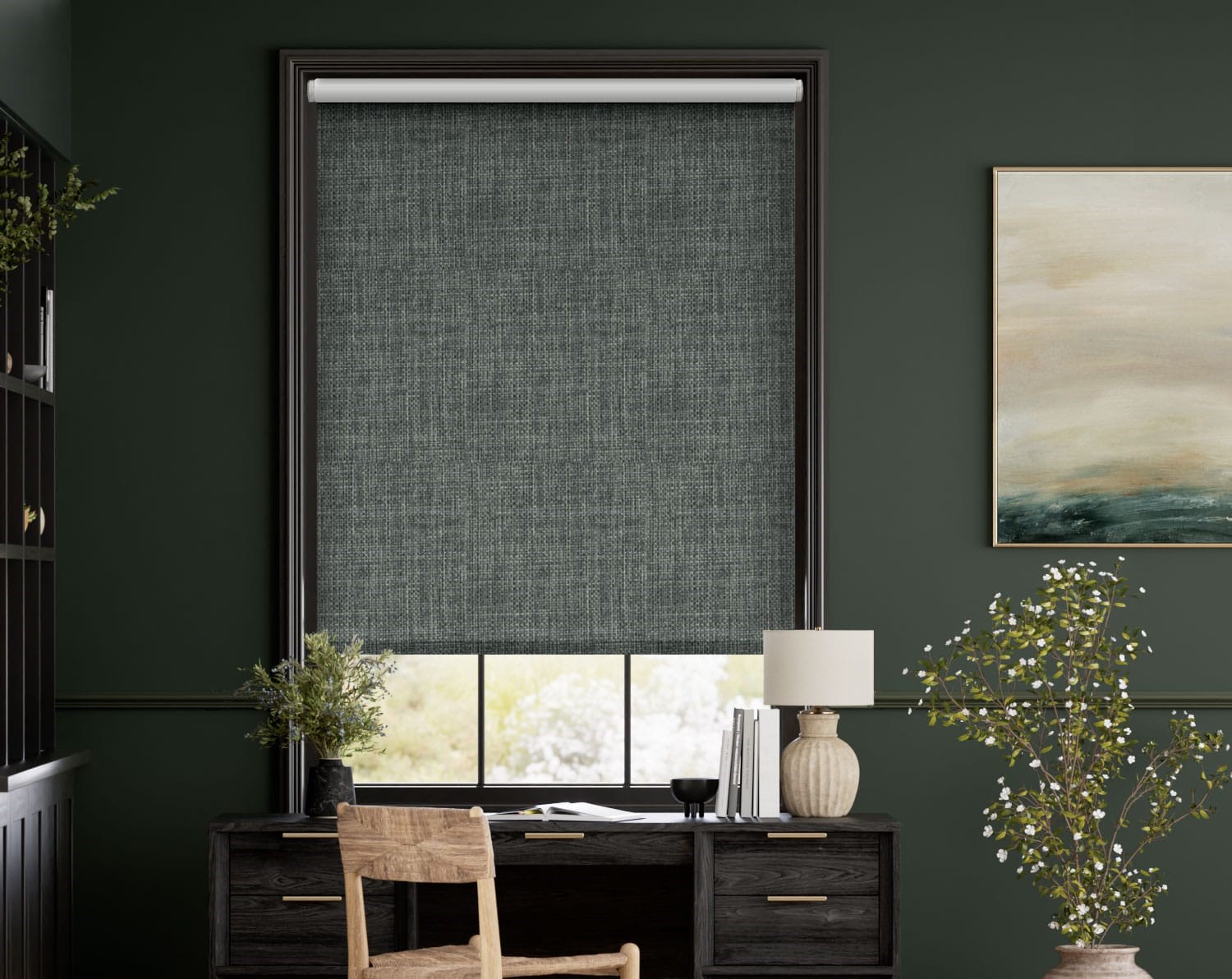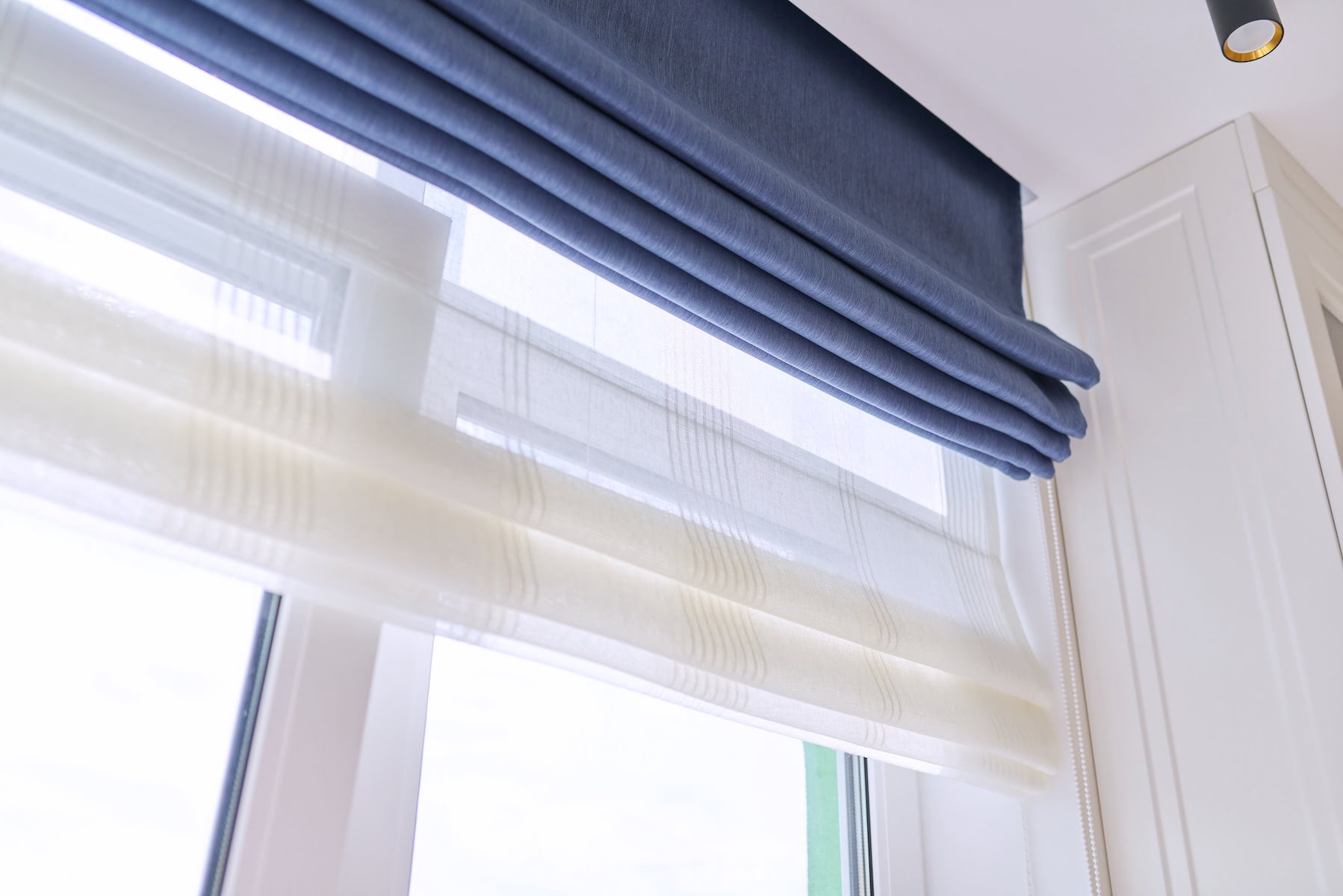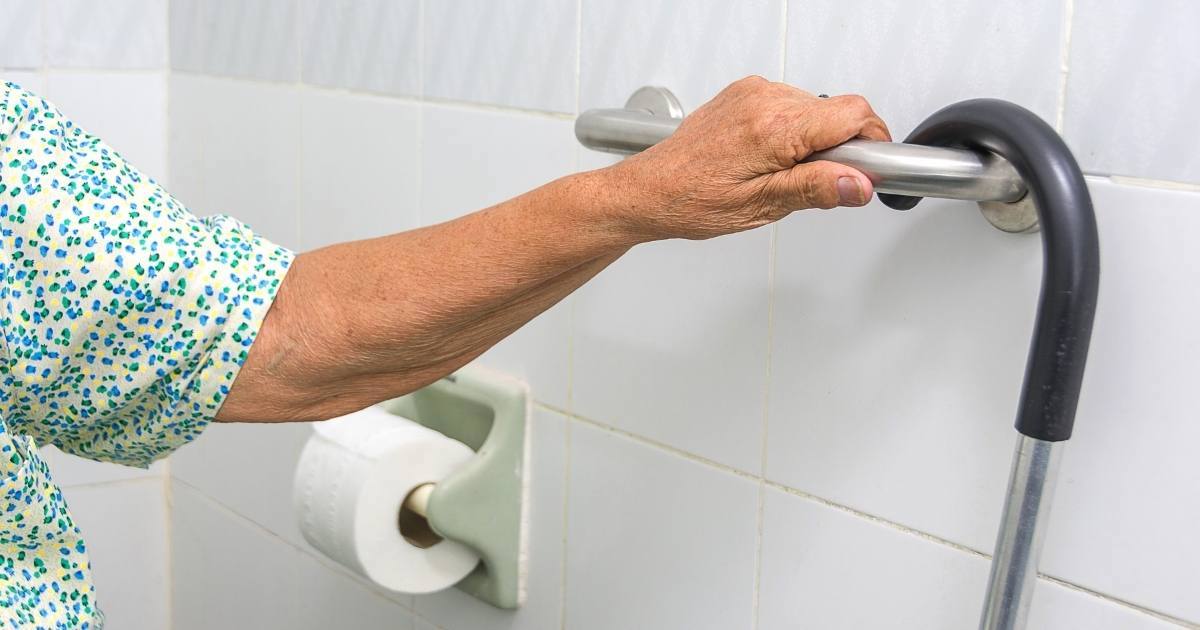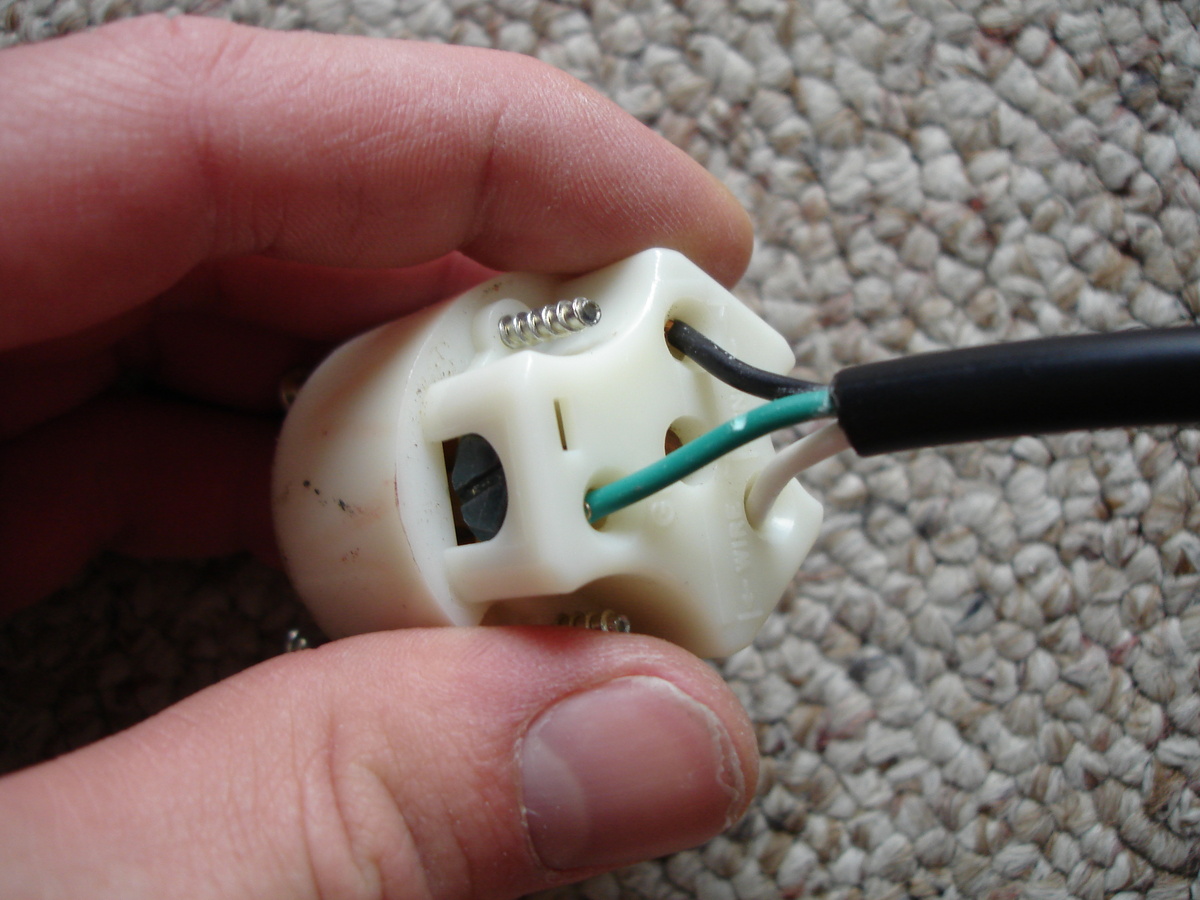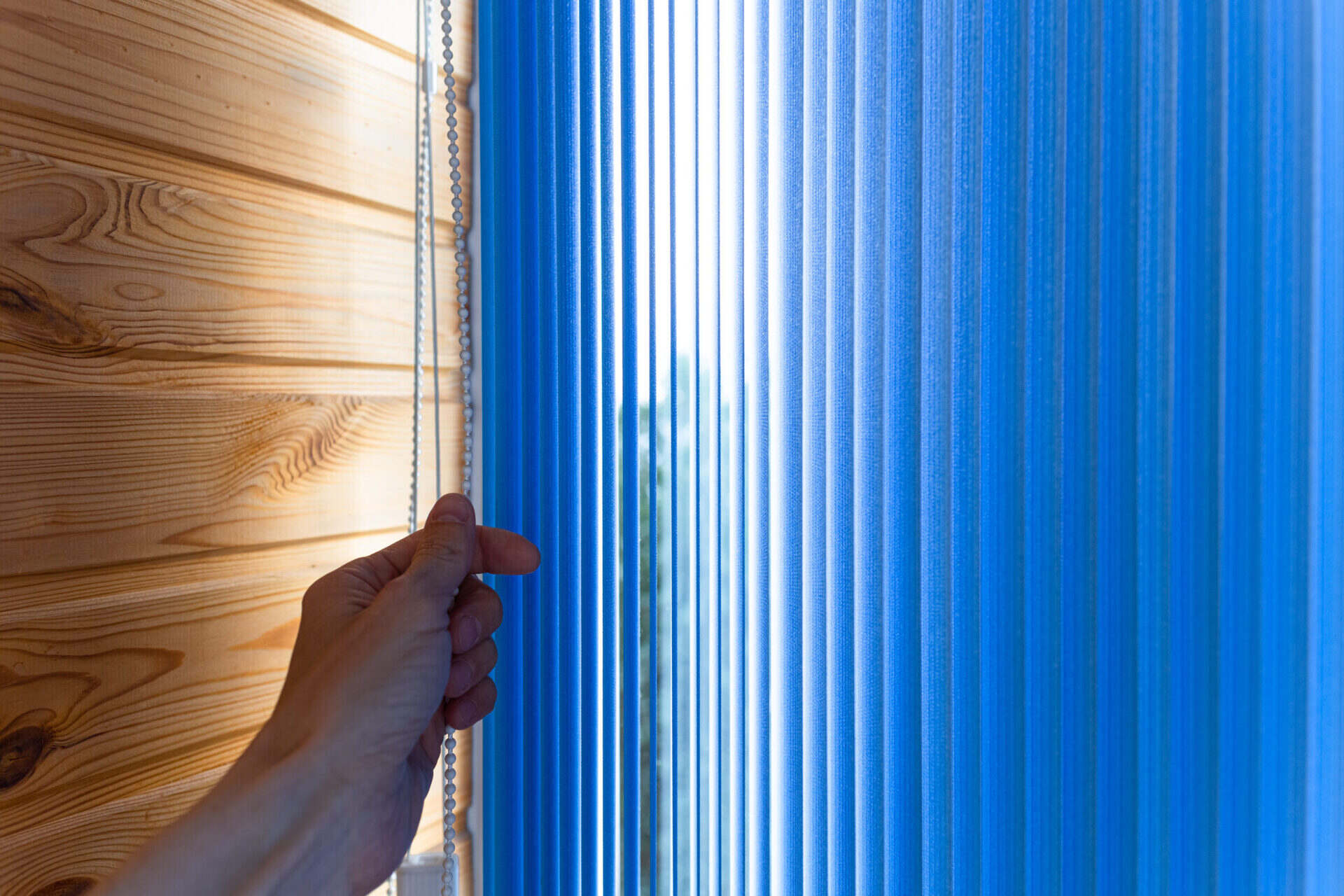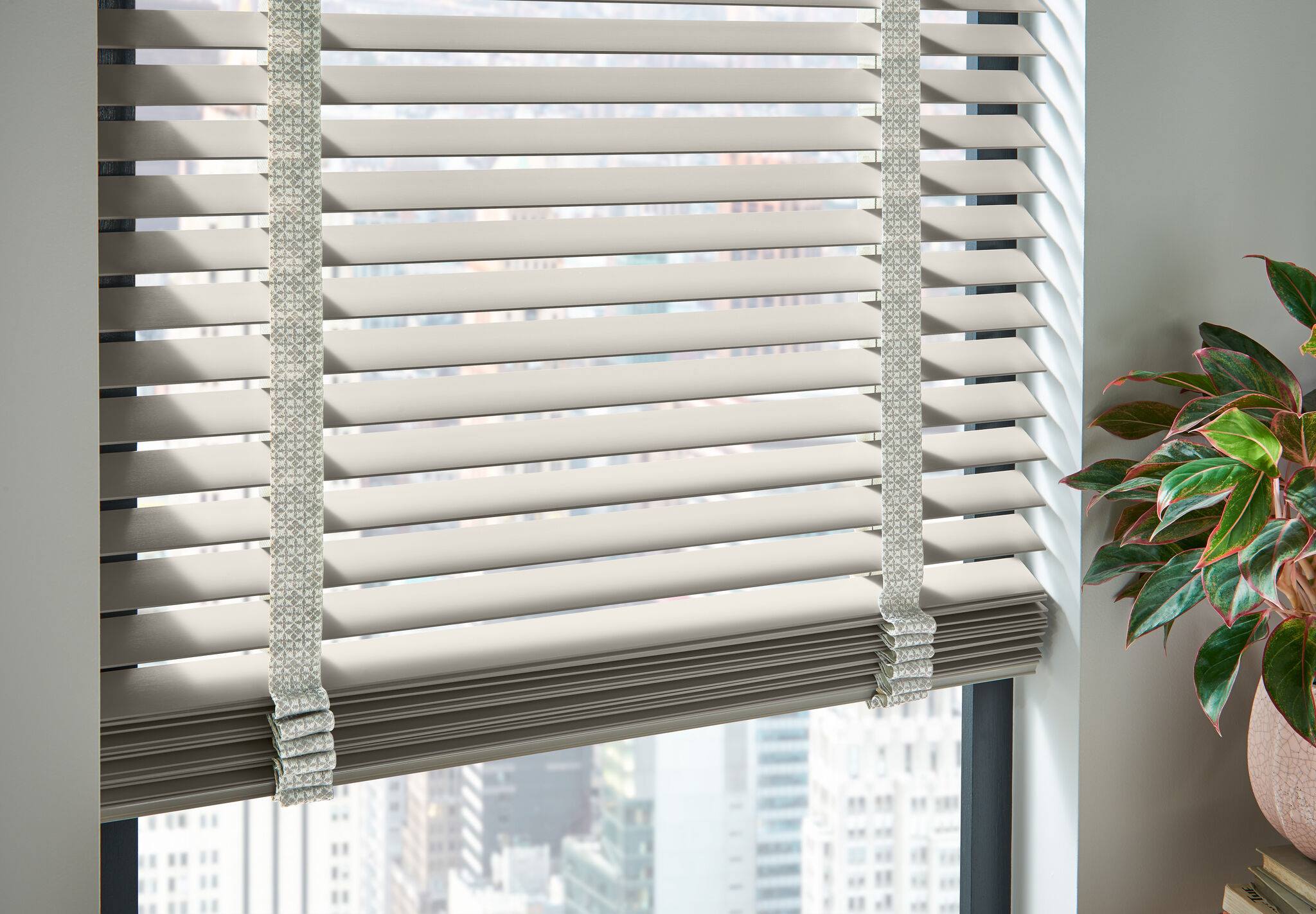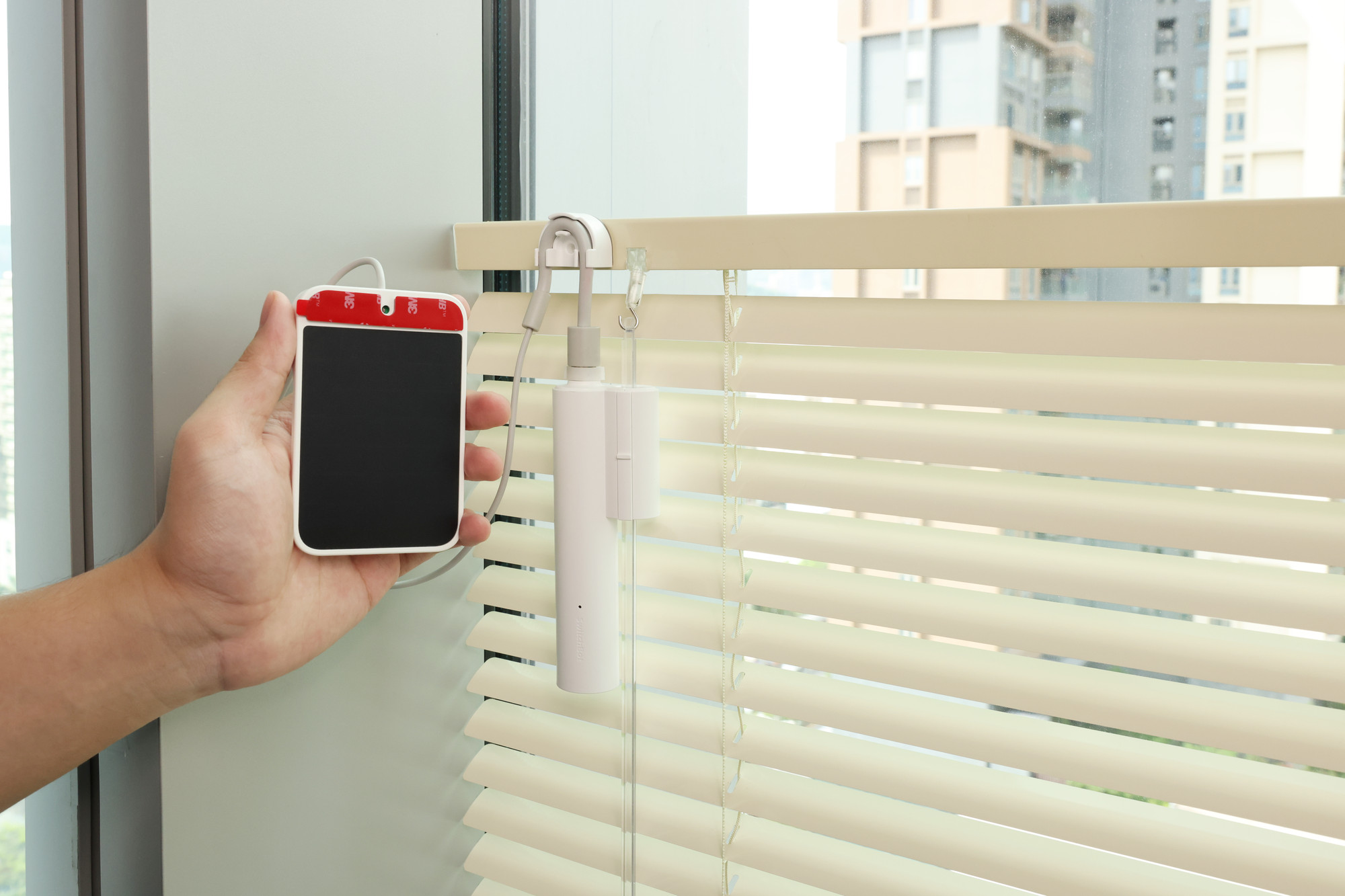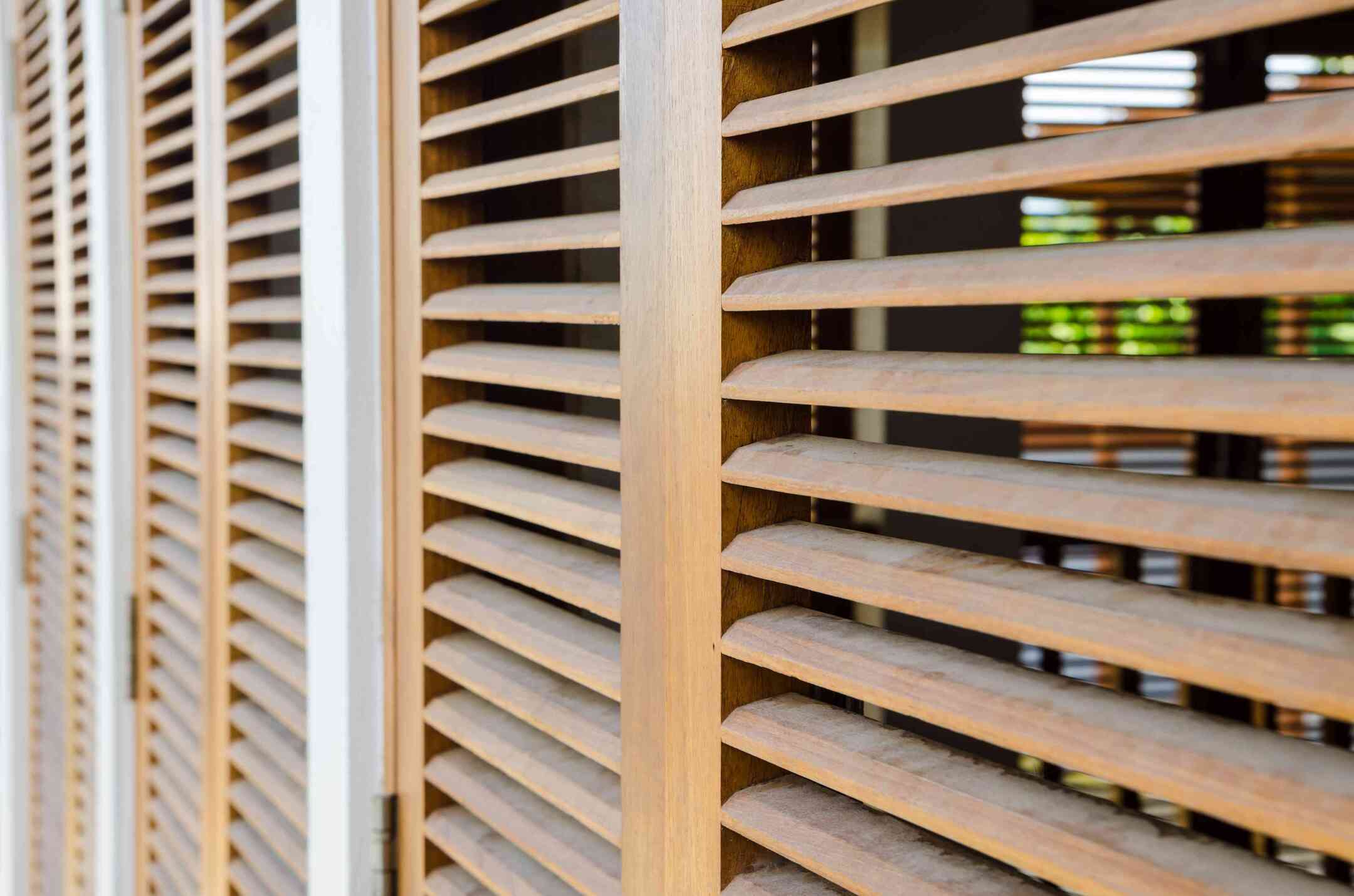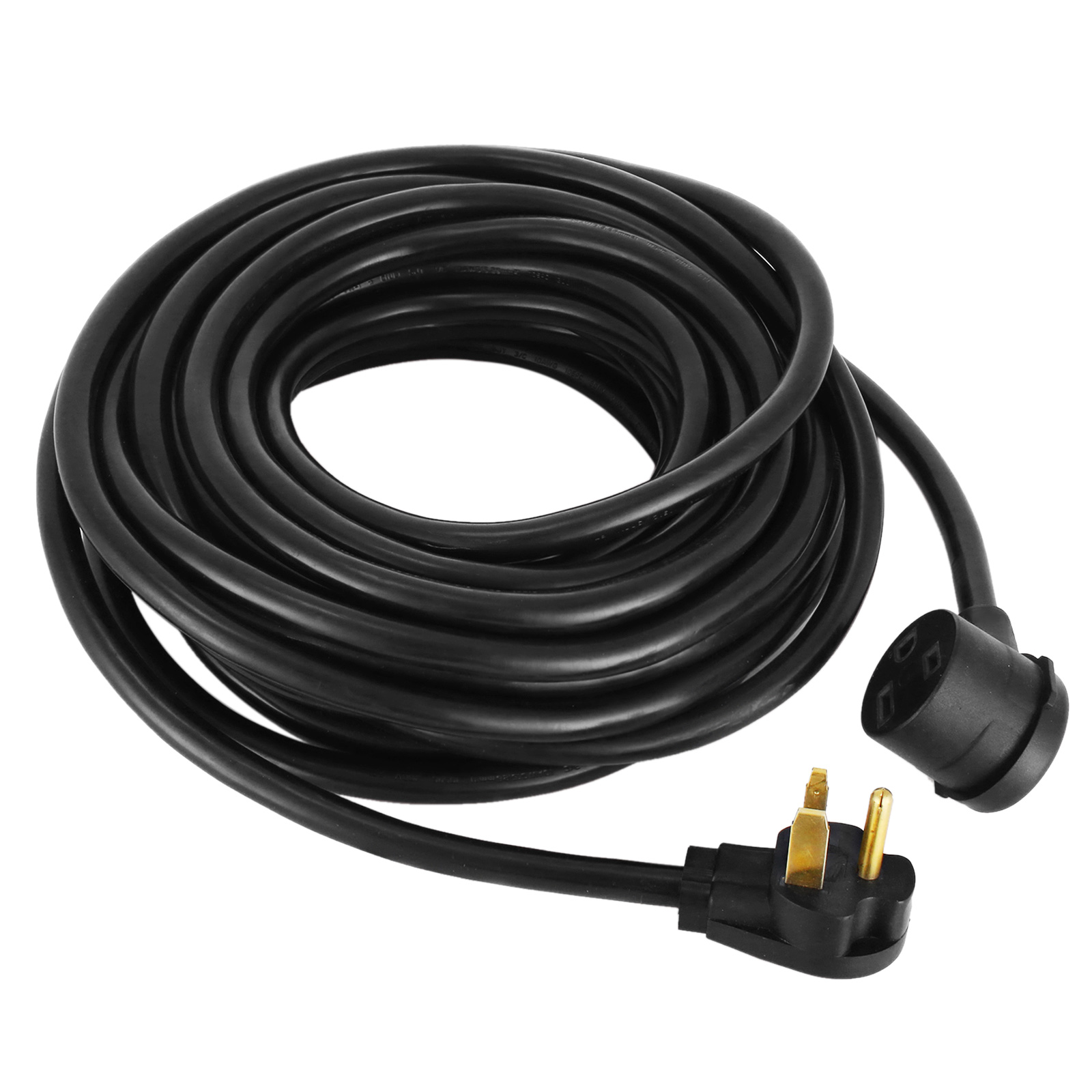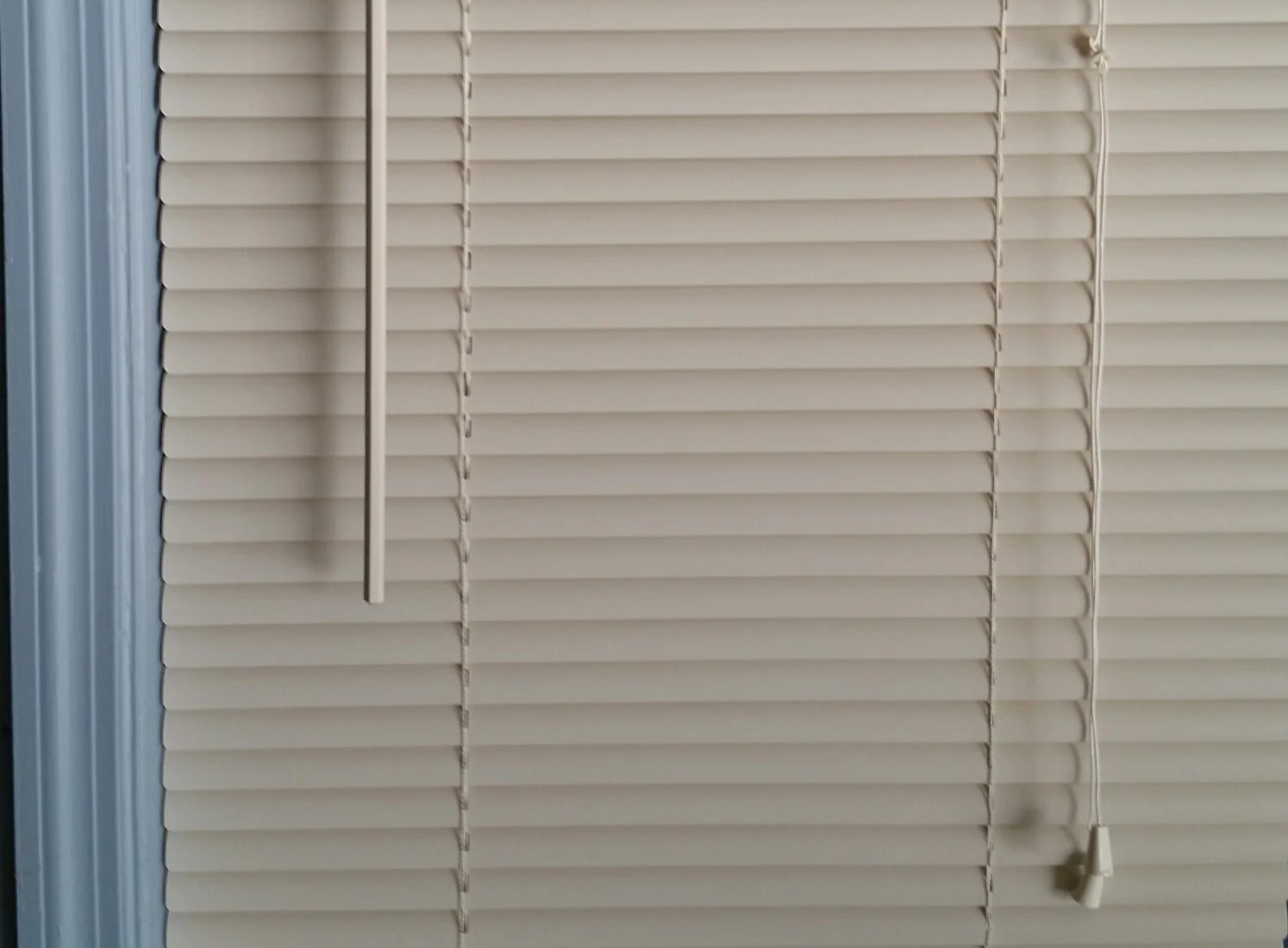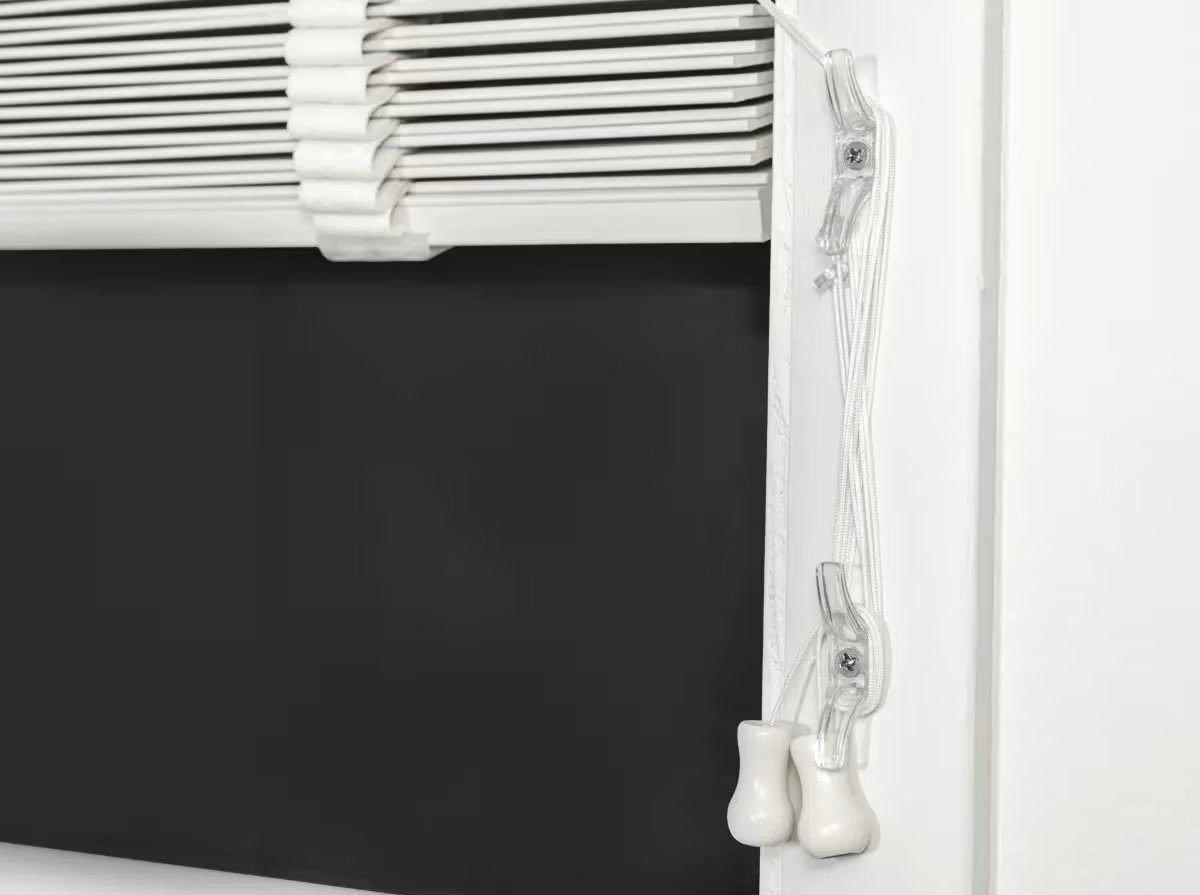

Articles
How To Make Corded Blinds Safe
Modified: August 26, 2024
Learn how to make corded blinds safe with these informative articles. Find step-by-step guides, tips, and advice to protect your home and loved ones.
(Many of the links in this article redirect to a specific reviewed product. Your purchase of these products through affiliate links helps to generate commission for Storables.com, at no extra cost. Learn more)
Introduction
Blinds are a popular window covering choice due to their versatility and ability to control light and privacy. However, corded blinds can pose a significant safety risk, especially for children and pets. The dangling cords can become entangled, creating a strangulation hazard.
Thankfully, there are several steps you can take to make corded blinds safe and minimize the risk. In this article, we will explore the importance of ensuring the safety of corded blinds and guide you through the process of making them safer.
By following these steps, you can enjoy the benefits of blinds while providing a safe environment for your family.
Key Takeaways:
- Transform your corded blinds into a safer alternative by replacing the corded mechanism with cordless blinds or kits, securing loose cords, and testing for safety and functionality. Prioritize the safety of your loved ones and create a worry-free living space.
- Gather the necessary materials, carefully remove the corded mechanism, and replace it with cordless alternatives to make your corded blinds safe. Secure any remaining loose cords and test for smooth operation, ensuring a safe environment for your family.
Read more: How To Fix Cord Lock On Blinds
Understanding the Risks of Corded Blinds
Corded blinds pose a serious risk, particularly to young children and pets. The long cords can easily become a hazard if they are left hanging or within reach. Tragic accidents have occurred when children become entangled in the cords, leading to injuries or even fatalities.
Children are naturally curious and may see the cords as a tempting plaything. Even a momentary lapse in supervision can result in a dangerous situation. Pets, too, can unknowingly get tangled in the cords and suffer harm.
It’s important to understand that these accidents can occur quickly and silently, making it difficult for parents or caregivers to intervene in time. That’s why it’s crucial to take proactive steps to make corded blinds safe and eliminate the risk altogether.
Fortunately, there are various methods and solutions available to transform corded blinds into a safer alternative. By implementing these measures, you can create a secure environment and reduce the chances of accidents occurring.
Steps to Make Corded Blinds Safe
Making corded blinds safe involves a series of steps to eliminate or minimize the risk of accidents. Follow these guidelines to ensure the safety of your blinds:
- Gather the Necessary Materials: Before you begin, collect all the materials you’ll need for the process. This may include cordless blinds or cordless blind kits, cord cleats, screwdrivers, and scissors.
- Remove the Corded Mechanism: Carefully dismantle the existing corded mechanism from your blinds. This typically involves unscrewing and detaching the cords from the pulleys or wands. Be cautious while handling the cords and ensure no loose ends are left behind.
- Replace with Cordless Alternatives: Install cordless blinds or cordless blind kits to replace the corded mechanism. Cordless blinds operate using a lift or tilt mechanism that eliminates the need for cords. Follow the manufacturer’s instructions for proper installation.
- Secure Loose Cords: If you still have cords hanging from your cordless blinds, secure them properly. Use cord cleats or cord wraps to bundle up any excess cord length and keep them out of reach of children and pets. Install the cleat or wrap high enough to prevent access.
- Test for Safety and Functionality: Once you have made the necessary adjustments, test the blinds to ensure they are functioning correctly. Make sure the blinds are moving smoothly and staying securely in place when raised or lowered.
By following these steps, you can effectively eliminate the dangers associated with corded blinds and create a safer environment in your home.
Gathering the Necessary Materials
Before you begin the process of making your corded blinds safe, it’s essential to gather all the necessary materials. Having everything on hand will ensure a smooth and efficient transformation. Here are the materials you’ll want to have in preparation:
- Cordless blinds or cordless blind kits: Look for blinds specifically designed to operate without cords. These blinds typically have a lift or tilt mechanism that allows you to control light and privacy without the need for cords.
- Cord cleats: Cord cleats are small plastic or metal devices that can be mounted on the wall or window frame. They are used to secure excess cord length and prevent it from dangling within reach.
- Screwdrivers: Depending on the type of blinds you have, you may need a screwdriver to remove the existing corded mechanism. It’s helpful to have both flathead and Phillips head screwdrivers available to cater to different screw types.
- Scissors: You will need scissors to carefully cut and remove the cords from the blinds. Make sure to use sharp scissors to achieve clean cuts and avoid fraying.
- Optional: Cord wraps or cord clips: Cord wraps or cord clips can be used to bundle up and secure any loose cords that are still present on your cordless blinds.
It’s crucial to choose high-quality materials that are specifically designed for cordless blinds. This ensures that the replacements and modifications you make are safe, reliable, and long-lasting.
By gathering these materials before you start, you can streamline the process and complete the transformation efficiently. This way, you’ll have everything within reach when needed, saving time and preventing any unnecessary interruptions.
Removing the Corded Mechanism
Once you have gathered all the necessary materials, it’s time to remove the existing corded mechanism from your blinds. This step is crucial in making your corded blinds safe. Follow these guidelines to safely remove the corded mechanism:
- Prepare the workspace: Start by creating a clear and organized workspace. Place your blinds on a flat surface where you have enough room to maneuver. Having a clutter-free area ensures that you can work efficiently and minimize the risk of any accidental damage.
- Identify the corded mechanism: Take a close look at your blinds and identify the corded mechanism. This typically consists of pulleys or wands connected to the cords that control the movement and positioning of the blinds.
- Unscrew and detach the cords: Use a screwdriver to remove any screws or fasteners that are securing the corded mechanism. Take note of the specific locations where the cords are attached to the blinds. Carefully disconnect the cords from the pulleys or wands, ensuring that they are fully detached.
- Remove any remaining cord segments: After removing the cords from the mechanism, inspect the blinds for any remaining cord segments. Cut these segments with a pair of scissors and remove them completely. Be cautious not to damage the blinds when cutting the cords.
- Inspect and clean the blinds: Once the corded mechanism and cords have been removed, thoroughly inspect the blinds for any signs of wear or damage. If necessary, take this opportunity to clean the blinds, removing any dust or debris that may have accumulated over time.
It’s important to handle the cords with care and attention during the removal process. Make sure to keep any loose ends away from children or pets to prevent any accidents.
By successfully removing the corded mechanism, you are one step closer to transforming your blinds into a safer alternative. The next step involves replacing the corded mechanism with cordless alternatives to enhance the safety and functionality of your blinds.
When installing corded blinds, make sure to secure the cords out of reach of children and pets by using cord cleats or tension devices. This will help prevent any potential strangulation hazards.
Read more: How To Lower Window Blinds Without A Cord
Replacing with Cordless Alternatives
Replacing the corded mechanism with cordless alternatives is a crucial step in making your blinds safe. Cordless blinds operate without the need for dangling cords, reducing the risk of accidents and creating a safer environment for your household. Follow these steps to effectively replace the corded mechanism:
- Select the right cordless blinds: Look for cordless blinds that align with your window dimensions and design preferences. Measure your windows carefully to ensure a proper fit. Cordless blinds come in various styles, such as roller blinds, cellular shades, and Roman shades.
- Follow the manufacturer’s instructions: Each brand and type of cordless blinds may have specific installation instructions. Read the manufacturer’s guidelines thoroughly to ensure proper installation. Pay close attention to any safety measures mentioned in the instructions.
- Attach mounting brackets: Install the mounting brackets according to the instructions provided. These brackets will hold the cordless blinds securely in place. Use a level to ensure that the brackets are straight and properly aligned.
- Install the cordless blinds: Carefully insert the blinds into the mounting brackets. Follow the specific instructions provided with your blinds to ensure they are properly attached and functioning correctly.
- Test the functionality: Once the cordless blinds are installed, test their functionality. Raise and lower the blinds to ensure they move smoothly and stay securely in place when desired. If there are any issues or concerns, refer to the manufacturer’s troubleshooting guide or reach out to their customer support for assistance.
It’s important to emphasize that cordless blinds are designed with safety in mind. The absence of cords eliminates the risk of entanglement, providing peace of mind for households with children or pets. By replacing the corded mechanism with cordless alternatives, you are taking a significant step toward creating a safer living environment.
If you prefer to keep your existing blinds but want to eliminate the cords, cordless blind kits are also available. These kits include the necessary components to convert your corded blinds into cordless alternatives. Follow the included instructions to make the transformation successfully.
Securing Loose Cords
Even with the installation of cordless blinds, you may still have some loose cords present. These cords can be a potential hazard if left unsecured, as they can be tempting for children or pets to play with or become entangled in. Securing loose cords is an important step in making your blinds completely safe. Follow these guidelines to ensure that any remaining cords are properly secured:
- Assess the situation: Identify any cords that are still hanging loose from your blinds. These cords may be leftover from the previous corded mechanism or may be present due to the cordless blind design.
- Measure and cut excess cord length: Use a pair of scissors to measure and cut any excess cord length. Leaving long cords hanging freely can create a potential hazard. Cut the cords carefully to avoid fraying, ensuring a clean and neat appearance.
- Bundle up the cords: Use cord wraps or cord clips to bundle up the remaining cords. These can be found at home improvement stores or online. Place the cords neatly together and secure them with the chosen cord management solution. Make sure to bundle them tightly to prevent any loose ends or loops.
- Mount cord cleats: If cord wraps or cord clips are not available, cord cleats are an alternative option. Cord cleats are small hooks or devices that can be mounted on the wall or window frame. Wrap the cords around the cleat, making several loops to keep them out of reach. Mount the cleat high enough so that children or pets cannot access the cords.
- Organize and conceal cords: If you prefer to have a cleaner aesthetic or want to further increase safety, consider organizing and concealing the cords. You can use cord management solutions such as cord covers or cord channels to hide the cords along the wall or window frame. This not only improves the appearance but also reduces the chances of the cords getting tangled or pulled.
By securing loose cords, you create a safer environment by eliminating any potential hazards associated with corded blinds. Taking these precautionary measures promotes the overall safety of your household, particularly for children and pets.
Remember to periodically check the cords to ensure they remain secure. Adjust and reinforce the cords if needed to maintain a safe and tidy appearance.
Testing for Safety and Functionality
After you have made the necessary modifications to your blinds, it’s crucial to test them for both safety and functionality. Testing ensures that your blinds are operating correctly and that they meet the desired safety standards. Follow these guidelines to evaluate the safety and functionality of your newly transformed blinds:
- Check the smooth movement: Test the blinds to ensure they move smoothly when raising or lowering them. They should operate without any hitches or jerking motions. If there are any difficulties in moving the blinds, investigate the cause and make adjustments as necessary. Smooth movement is essential for the overall functionality and longevity of your blinds.
- Verify secure positioning: When you raise or lower the blinds, they should stay securely in place at the desired height. The blinds should not slip or slide down unintentionally. Check that the locking mechanism or brackets are holding the blinds firmly in position.
- Inspect cordless operation: If you have installed cordless blinds, ensure that the lift or tilt mechanism is functioning properly. Test the controls to ensure that they move the blinds smoothly and without resistance. Verify that the blinds are responding accurately to your commands.
- Examine cord management: If you have secured any remaining cords with cord wraps or cleats, check that they are holding the cords securely and out of reach. Ensure that the cords remain neatly bundled and do not pose any hazards. If you have opted for cord covers or channels, confirm that they are effectively concealing and organizing the cords.
- Consider child and pet safety: Put yourself in the mindset of a child or a curious pet. Look for any potential hazards or gaps that could be accessed or grabbed. Consider the overall safety of the blinds from their perspective and make any necessary adjustments to eliminate risks.
If you identify any issues or concerns during the testing phase, address them promptly. Consult the manufacturer’s instructions or contact their customer support for guidance. It’s essential to prioritize safety and functionality to ensure the long-term use and enjoyment of your blinds.
Regularly perform maintenance checks and inspections on your blinds to ensure they continue to meet safety standards. This way, you can rest assured that your blinds are not only stylish but also safe for your household.
Conclusion
Ensuring the safety of corded blinds is of utmost importance, especially when it comes to protecting young children and pets from potential hazards. By following the steps outlined in this article, you can successfully make your corded blinds safe and minimize the risk of accidents.
Understanding the risks associated with corded blinds is the first step in taking proactive measures. By acknowledging the potential dangers, you prioritize the safety and well-being of your loved ones.
The process of making corded blinds safe involves gathering the necessary materials, removing the corded mechanism, replacing it with cordless alternatives, securing loose cords, and testing for safety and functionality.
Gather all the materials you need, including cordless blinds or cordless blind kits, cord cleats, screwdrivers, and scissors. Carefully remove the existing corded mechanism, ensuring that no loose cords remain. Install cordless blinds or cordless blind kits to replace the old system, following the manufacturer’s instructions. Secure any remaining loose cords using cord wraps, cord clips, or cord cleats to keep them out of reach. Finally, test the blinds to ensure smooth operation, secure positioning, and proper cord management.
By taking these steps, you can effectively transform your corded blinds into a safer alternative, providing peace of mind for you and your family.
Remember, safety should always be a priority. Regularly check and maintain your blinds to ensure they continue to meet safety standards over time. By creating a safe environment, you can enjoy the benefits of blinds while minimizing the risks traditionally associated with corded mechanisms.
Protecting your loved ones shouldn’t be a compromise. Upgrade your corded blinds to ensure a secure and worry-free living space for your entire household.
Frequently Asked Questions about How To Make Corded Blinds Safe
Was this page helpful?
At Storables.com, we guarantee accurate and reliable information. Our content, validated by Expert Board Contributors, is crafted following stringent Editorial Policies. We're committed to providing you with well-researched, expert-backed insights for all your informational needs.
